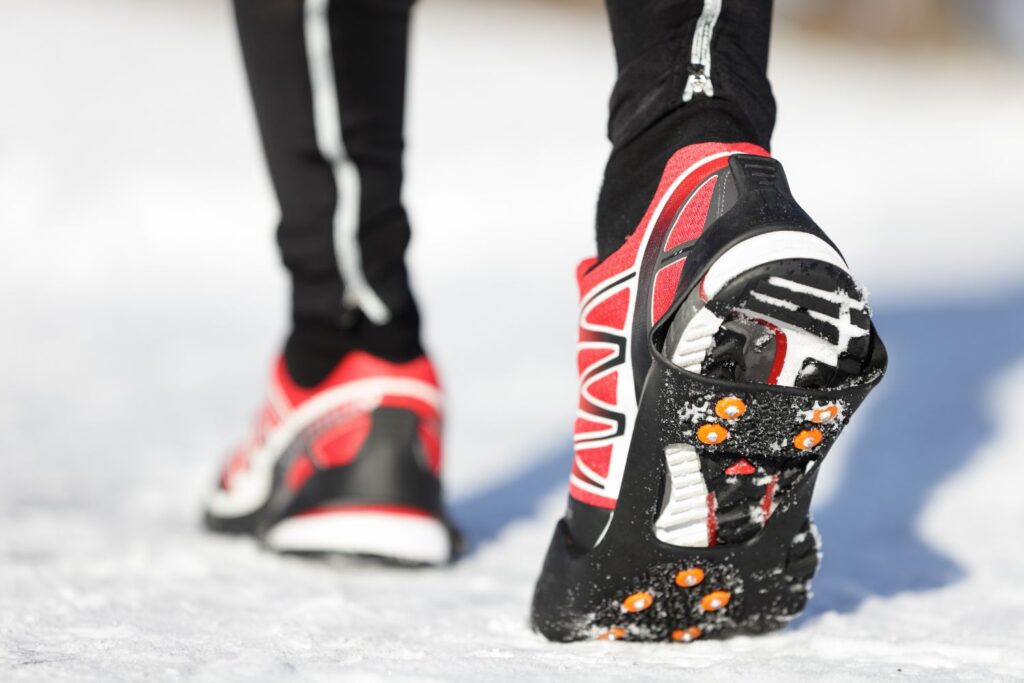Cold weather can make running feel impossible. You might look outside at the snow or feel that bitter wind and decide to skip your workout altogether. The thought of leaving your warm, cozy home to face freezing temperatures can be overwhelming, especially when you are just starting your running journey.
The truth is that cold weather running can be one of the most rewarding experiences you will ever have. When you learn the right techniques and strategies, winter becomes your secret weapon for building mental toughness and physical strength. Cold air is actually easier on your lungs than hot, humid air, and you will not overheat as quickly.
Today, we will share 11 game-changing tips that will transform you from someone who dreads winter runs into someone who actually looks forward to them. These strategies will keep you warm, safe, and motivated throughout the coldest months. You will discover that running in cold weather can be comfortable, enjoyable, and incredibly empowering.
The best part about mastering cold weather running is the confidence it builds. When you can handle a run in 20-degree weather, nothing else seems too challenging. You will develop a mental strength that carries over into every area of your life. Let’s turn you into a winter running warrior.
1. Layer Like a Pro, Not Like an Eskimo
Layering is the most important skill for cold weather running, but most beginners get it wrong. You might think you need to bundle up like you are going to build a snowman, but that will make you overheat within the first mile. The key is strategic layering that you can adjust as you warm up.
Start with a moisture-wicking base layer that sits close to your skin. This layer should never be cotton, which holds sweat and makes you cold. Add a light insulating layer if it is really cold, and finish with a wind-resistant outer layer that you can tie around your waist when you warm up.
Your goal is to feel slightly chilly when you step outside. You should be comfortable after about 10 minutes of running. If you are warm and cozy at the start, you will be overheated and miserable halfway through your run. Trust the process and dress lighter than your instincts tell you.
2. Protect Your Extremities First

Your hands, feet, and head lose heat faster than any other part of your body. When these areas get cold, your entire run becomes miserable. Smart extremity protection makes the difference between a great run and cutting your workout short.
Invest in running-specific gloves that you can easily remove and put back on. Wool or synthetic socks will keep your feet warm and dry. A lightweight running hat or headband protects your ears without making you overheat. Your regular winter accessories are usually too heavy for running.

Start with these accessories on and remove them as you warm up. Tuck gloves into your waistband and tie your hat to your wrist if needed. You will be amazed at how much more comfortable your entire body feels when your extremities stay warm. This simple strategy will extend your runs and boost your confidence.
3. Warm Up Inside Before You Step Out
Never start a cold weather run with cold muscles. This is one of the biggest mistakes beginners make, and it leads to injury and miserable runs. Your muscles need extra time to warm up when the temperature drops, so give them a head start indoors.
Do five minutes of dynamic movements inside your warm house. Try arm circles, leg swings, gentle lunges, and marching in place. This gets your blood flowing and prepares your muscles for the shock of cold air. Your body will thank you for this extra care.
You can also do the first few minutes of your run as a very slow walk or gentle jog. Think of this as an extended warm-up rather than part of your actual workout. When your muscles are properly warmed up, cold weather running becomes much more comfortable and enjoyable.
4. Master the Art of Breathing

Cold air can make breathing feel difficult and uncomfortable, especially for beginners. You might feel like the cold air is burning your lungs or making you cough. Learning proper breathing techniques will make cold weather running feel natural and comfortable.
Breathe through your nose as much as possible, especially at the beginning of your run. Your nose warms and humidifies the air before it reaches your lungs. If you need to breathe through your mouth, try to keep your tongue against the roof of your mouth to warm the incoming air.
Consider wearing a lightweight buff or scarf around your neck that you can pull up over your mouth if needed. This creates a pocket of warm air that makes breathing more comfortable. As you get more experienced, you will need this less and less. Your lungs will adapt to cold air running faster than you think.
5. Choose the Right Running Shoes

Your regular running shoes might not give you enough traction on snowy or icy surfaces. Slipping and sliding will make you tense up and ruin your running form. The right footwear gives you confidence to focus on your pace and breathing instead of worrying about falling.
Look for shoes with deeper treads or consider adding traction devices for really icy conditions. Your shoes should also have enough room for slightly thicker socks without being too loose. Wet feet from snow getting into your shoes will end your run quickly.
If you are serious about winter running, invest in trail running shoes or winter-specific running shoes. The extra grip and weather protection are worth every penny. When your feet feel secure and comfortable, the rest of your run will flow naturally. You will run with better form and more confidence.
6. Start Slow and Build Gradually
Cold weather affects your body differently than warm weather running. Your muscles take longer to warm up, and your perceived effort might feel higher at the same pace. This is completely normal, and fighting against it will only make you frustrated and exhausted.
Plan to run at a slower pace for the first 10-15 minutes of any cold weather run. Think of this as an investment in the rest of your workout. Once your body fully warms up, you can gradually increase your pace if you want to. Most of the time, you will find a comfortable rhythm and stick with it.
Do not worry about your pace or distance when you are learning cold weather running. Focus on time spent outside and how you feel. Building confidence in cold conditions is more important than hitting specific pace goals. The speed will come naturally as you get more comfortable.
7. Plan Your Route Strategically

Not all running routes are created equal in cold weather. Wind exposure, sun exposure, and surface conditions can make or break your run. Planning your route with weather conditions in mind will make your runs more enjoyable and safer.
Try to start your run going against the wind so you have it at your back on your way home. This prevents you from getting chilled when you are sweaty and tired. Look for routes with some tree cover or buildings that block the worst of the wind. Even small amounts of wind protection make a huge difference.
Choose routes with good footing and avoid areas that tend to ice over. Running on snow is usually safer than running on ice, so do not be afraid of snowy paths. Plan shorter loops close to home when you are starting out. This gives you the option to cut your run short if conditions become uncomfortable.
8. Fuel and Hydrate Properly

You might not feel as thirsty in cold weather, but you still need to stay hydrated. Cold air is dry air, and you lose moisture through breathing that you might not realize. Dehydration will make you feel colder and more fatigued than necessary.
Drink water before your run and plan for hydration during longer runs just like you would in summer. You might prefer room temperature water instead of ice-cold water when it is freezing outside. Listen to your body and drink when you feel thirsty.
Fuel your runs properly too. Your body burns more calories trying to stay warm in cold conditions. Eat a small snack before longer runs and do not be surprised if you feel hungrier after cold weather workouts. This is your body doing exactly what it should do to keep you strong and healthy.
9. Make Yourself Visible and Safe

Daylight hours are shorter in winter, which means you might be running in low light conditions more often. Making yourself visible to drivers and other people is crucial for your safety. Bright colors and reflective gear are not just smart choices – they are essential.
Wear bright colors during the day and add reflective elements for early morning or evening runs. A lightweight reflective vest or jacket is a great investment. LED lights or clip-on blinkers make you even more visible. Your safety is worth the small investment in visibility gear.
Let someone know your planned route and expected return time, especially for longer runs. Carry your phone in a secure pocket or running belt. Cold weather presents additional risks like hypothermia or getting lost in snow, so extra precautions are always smart. Being prepared lets you focus on enjoying your run.
10. Recover and Warm Up Properly
What you do after your cold weather run is just as important as what you do during it. Do not stand around outside in sweaty clothes, and do not jump straight into a hot shower. Your body needs time to adjust back to normal temperature gradually.
Get inside quickly and change out of wet clothes immediately. Put on dry, warm clothes and drink something warm if you want to. Do some gentle stretching while your muscles are still warm. This is the perfect time to work on flexibility since your muscles are loose and responsive.
Take a warm shower, not a hot one. Hot water can actually be uncomfortable on cold skin and might make you feel dizzy. Warm water feels amazing and helps your body temperature return to normal safely. Pay attention to how you feel and give your body what it needs to recover well.
11. Build Mental Toughness with Small Wins
Cold weather running is as much mental as it is physical. Building mental toughness happens one run at a time, one small victory at a time. Do not try to conquer winter running all at once. Celebrate every single run you complete in cold conditions.
Set small, achievable goals like running for 15 minutes in 30-degree weather. When you accomplish that, try 20 minutes or slightly colder conditions. Each successful run builds confidence for the next one. Before you know it, you will be the woman who runs in any weather.
Keep a running journal where you record not just miles and times, but how you felt during cold weather runs. Write down what worked, what did not, and what you want to try next time. This helps you learn about your preferences and track your progress. You will be amazed at how quickly you adapt and improve.
Conclusion
These 11 cold weather running tips will transform your relationship with winter running forever. You do not need to be naturally tough or have special genetics to become a cold weather runner. You just need the right strategies, proper gear, and the willingness to start small and build gradually.
The confidence you gain from mastering cold weather running will spill over into every area of your life. When you can handle a 5-mile run in freezing temperatures, work challenges and daily stress seem much more manageable. You will develop an inner strength that surprises even you.
Remember that every experienced winter runner was once a beginner who felt nervous about that first cold weather run. The difference between those who quit and those who thrive is simply taking that first step outside. You have everything you need to become a confident cold weather runner.
Start with just one of these tips today. Pick the one that feels most doable and try it on your next run. You do not need perfect conditions or perfect preparation. You just need to start. The strong, resilient runner you want to become is waiting for you just outside your door.
Your winter running journey starts right now. Bundle up smart, step outside, and show yourself just how capable you really are. The fresh air, quiet roads, and incredible sense of accomplishment are calling your name. The cold weather runner you deserve to be is just one run away.
Love This Post? Pin It for Later!





